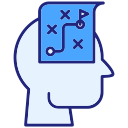Everyday Routines That Strengthen Recall
Before opening messages, rewrite yesterday’s three biggest learnings from memory. Add one example for each, then plan where you’ll apply them today. This anchors critical knowledge early, shields your attention from noise, and creates a calm sense of control. What three items will you test tomorrow morning?
Everyday Routines That Strengthen Recall
At the end of a meeting, take two minutes to recall aloud the decision, the why, and the next step. Capture it in a visible place. This tiny ritual prevents ambiguity, reduces rework, and creates shared mental models. Invite your team to try it for a week and report the impact.





